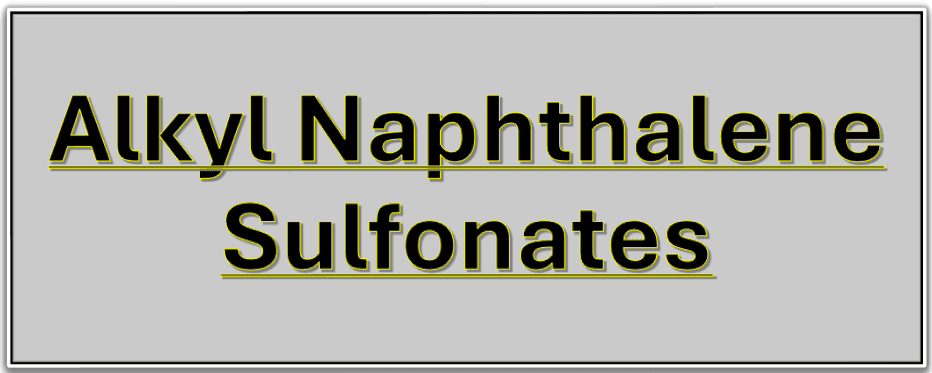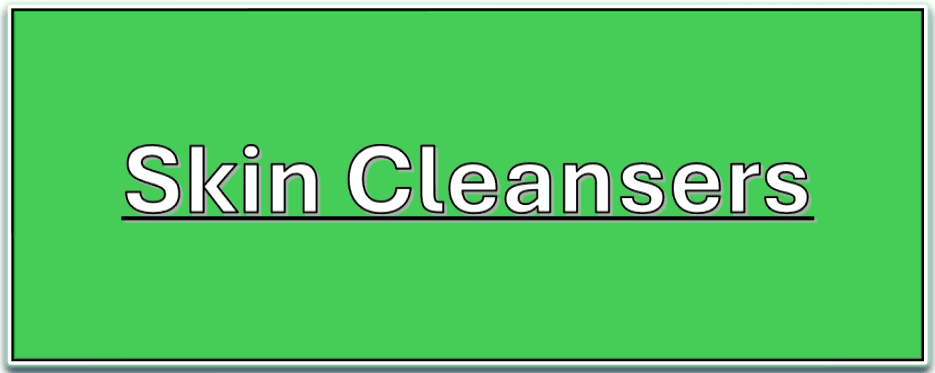Alkyl naphthalene sulfonates are a type of sulfonate compound that find wide applications in various industries. These compounds are derived from naphthalene, a polycyclic aromatic hydrocarbon, and are modified by the addition of alkyl groups. Alkyl naphthalene sulfonates have unique properties that make them useful in a range of applications, including as surfactants, dispersants, and emulsifiers.
Nomenclature Generic:
Alkyl naphthalene sulfonates,
Phenol formaldehyde sulfonic acid condensates,
Naphthalene sulfonic acid-formaldehyde condensates,
Di-nonyl naphthalene sulfonates.
Examples: Sodium isopropyl naphthalene sulfonate, Sodium dibutyl naphthalene sulfonate
Description
Alkylation of naphthalene followed by sulfonation gives a wide variety of products depending upon the size of the alkyl group and the amount of sulfonation. If the alkyl group contains less than five carbon atoms the products are water soluble and show surfactant properties depending on the size and number of alkyl groups. If the products have alkyl groups of nine carbon atoms and above the products are not water soluble (with one sulfonic acid group) but begin to show solubility in mineral oil.
The water-soluble alkyl naphthalene sulphonates are made on simple batch reactors (glass lined) by reaction of short-chain alcohol with naphthalene in the presence of oleum. The oleum acts as a catalyst for the alkylation of the naphthalene by the alcohol as well as sulfonating the naphthalene. The degree of alkylation and the degree of sulfonation can be controlled by the proportion of starting ingredients. The position of sulfonation on the naphthalene ring will depend upon the temperature of sulfonation, the sulphonate group being in both the 1 and 2 positions with low temperatures favoring the 1 position and high temperatures (> l00°C) the 2 position. There will also be some disulfonation and the alkyl groups can be anywhere on the naphthalene ring. Thus the reaction products are complex mixtures. One way of characterization is by molecular weight:
| Alkyl derivative of mono-sulfonate | Molecular weight of sodium salt |
| Methyl | 244 |
| Ethyl | 258 |
| Isopropyl | 272 |
| Butyl | 286 |
| Diisopropyl | 313 |
| Dibutyl | 351 |
Note that all kinds of mixtures are possible so a molecular weight of 272 could mean alkylation with isopropyl alcohol or with a mixture of methanol and butanol. The two main commercial products are butyl naphthalene sulfonate and isopropyl naphthalene sulfonate, both available in powder form as sodium salt, but most products contain large quantities (5-15%) of sodium sulfate. However, some manufacturers offer products with low-sodium sulfate content.
General properties
Solubility:
Excellent solubility in water depending upon the type and amount of alkyl substitution; most products can be made at 40% active aqueous solutions; the dibutyl derivative is less soluble than the mono-butyl or di-isopropyl but has better wetting and emulsifying properties. These compounds also exhibit good solubility in organic solvents, which further enhances their versatility.
Compatibility with aqueous ions:
Tolerant to hard water; good lime soap dispersibility; compatible with strong alkalis, strong acids and high concentrations of electrolytes.
Chemical stability:
Stable to acids and alkalis; aqueous solutions stable up to l00 ◦C; unstable above (e.g. disperse dying under pressure); stable in oxidizing and reducing agents.
Functional properties:
Excellent wetting properties with the higher molecular weight (diisopropyl and dibutyl) derivatives, best detergent properties with dibutyl derivative; low foam with low molecular weight products 250-260 (methyl, ethyl) but high foam with molecular weight 280-300; hydrotrope properties claimed for low-medium molecular weight products.
Alkyl naphthalene sulfonates have excellent emulsifying properties, allowing them to stabilize oil-in-water and water-in-oil emulsions. This makes them ideal for use in the formulation of emulsions, creams, lotions, and other personal care products.
Disadvantages:
Doubts on biodegradability but lack of information.
Applications
General:
The alkyl naphthalene sulfonates were developed as soap substitutes and were mainly used in textile processing. They were extensively used as general-purpose surfactants and detergents but were replaced by petrochemical-based anionics (LABS). The present uses are restricted to their excellent wetting and dispersing properties rather than the detergent properties.
Household products:
Alkyl naphthalene sulfonates are widely used as surfactants in various industries, including detergent manufacturing, textile processing, and oilfield chemicals. They help to reduce the surface tension of liquids, allowing for better cleaning and wetting. These compounds are effective in removing dirt, grease, and oil from surfaces.
Products with molecular weight 280-290 have been recommended for use with lauryl sulfate in rug shampoos in order to depress the cloud point and improve the friability of the residue on drying.
Personal Care:
Alkyl naphthalene sulfonates are employed as emulsifiers in the production of emulsions and creams. They help to stabilize oil and water mixtures, preventing phase separation and ensuring a homogeneous product. These compounds are commonly used in the formulation of personal care products, such as lotions, creams, and hair conditioners.
Textiles:
Wetting agent and dispersing agent for disperse dyes but limited to dying temperatures of l00◦C maximum.
Industrial detergents:
Used as a wetting agent in cheap acid cleaners, e.g. brick cleaning, metal cleaning and metal pickling; stable to 5% hydrochloric acid.
Agricultural:
Act as combined wetting and dispersing agent for wettable powder pesticides; They help to improve the spreading and absorption of these chemicals on plant surfaces, enhancing their effectiveness; use in fertilizers where an alkyl naphthalene sulfonate is incorporated into a urea melt to give protection against caking.
Paints:
Alkyl naphthalene sulfonates are used as dispersants in the formulation of paints, inks, and coatings. They help to stabilize pigment particles and prevent them from clumping together, ensuring a uniform distribution of color. These compounds also improve the flow and leveling properties of coatings, resulting in a smoother finish. Wetting agent in water-based paints.
Concrete admixtures:
Alkyl naphthalene sulfonates are used as plasticizers in the production of concrete. They improve the workability and flow of concrete mixtures, allowing for easier placement and compaction. These compounds also enhance the strength and durability of concrete, making it more resistant to water penetration and chemical attack.
Electroplating:
Wetting agent for acid electroplating baths.
Specification
| Active content | 80-95% powder |
| Sodium sulfate | 3-20% |
| Unsulfonated material | 1-3% |
| Molecular weight | 240-290 |
| Occasionally sold as | a liquid with active content 20-40% |
| Compare with molecular weight of LABS | of 340-360. |








